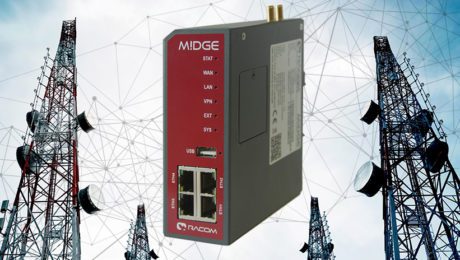Navigating the Future with Edge Computing
In the ever-evolving sphere of technology, a ground-breaking innovation that has recently captured significant attention is edge computing. The influence of edge computing continues to swell, with businesses and industries recognising its potential to transform the way data is processed and analysed. This blog takes a deep dive into the latest trends in edge computing that are continuing to reshape the technological landscape in 2024.
(more…)
- Published in LTE
Harnessing Simoco to Tackle Bushfires in Australia
Bushfires pose an ongoing threat in Australia, causing widespread devastation to communities, wildlife, and infrastructure. With climate change intensifying the frequency and severity of these fires, it’s crucial for organisations to deploy reliable communication systems to effectively respond to and mitigate these disasters. In such critical circumstances, Simoco Wireless Solutions proves to be an indispensable ally, offering advanced communication technologies that empower organisations to react promptly and efficiently. (more…)
- Published in LTE, Professional Mobile Radio, Unified Communications
Introducing a cellular router that boasts next generation performance suitable for SCADA and telemetry or industrial IoT deployments
What are Cellular routers?
A cellular router is a transportable device which enables users to connect to the Internet via a cellular data network rather than cables. The benefit a cellular router provides is that they let many users access the Internet using just one integrated cellular networking system. As opposed to conventional modems, a cellular router does not require an Ethernet wire, phone line or fibre optic connection to connect to the Internet. Rather, they are able quickly connect to cellular towers that belongs to certain networks.
- Published in LTE
At the push of a button: How PoC can extend your business radio network
Every organisation will, at some point, have to facilitate a group conversation or discussion. That’s all very well if it can take place face-to-face, in a meeting room. But what happens when that group is dispersed over several different locations, or when individual members of that group are on the move and using different forms of communication?
- Published in LTE
Staying on top of standards
Careful readers of the business pages might have noticed this story in recent weeks: the news that SoftBank, the Japanese mobile technology giant has backed what looks like a bid to create a new mobile network in the UK.
As industry insiders point out, the bid is unlikely to be a serious threat to the country’s four main mobile operators – Vodafone, O2, Three and EE – but it does shed light on a crucial auction due to take place in the coming weeks. Ofcom is releasing more airwaves in a so-called ‘spectrum auction’, for which six companies are registered to bid. As the above article explains, ‘the auction will include 40 MHz of 2.3 GHz band, which is already supported by existing devices, and 150 MHz of 3.4 GHz band which will allow 5G to be rolled out.’
- Published in LTE
What’s your emergency? Complications and delays with the Emergency Services Network (ESN)
The Emergency Services Network (ESN) is an ongoing project to create a truly next-generation communications system for the UK’s police, fire and rescue, and ambulance services. It’s going to be a unified, integrated Long-Term Evolution (LTE) network that can carry critical data applications and broadband services as well as voice communications, and will be more resilient, reliable and secure than the current, disparate networks. It will enable the three emergency services to communicate and collaborate with each other, ultimately working more effectively and saving more lives. In short, it is intended to carry the UK’s emergency services into the future.
- Published in LTE
A taste of the future: what Apple can teach us about LTE
Have you got an Apple Watch yet? The third iteration of the device was recently launched – and, as outlined here, it comes with one very distinctive new feature – LTE connectivity.
The jury is still out as to whether this is a game-changing development for the Apple Watch or just a nice-to-have, and regardless of how it ends up positioning Apple in the marketplace, it’s certainly had some technical difficulties to iron out.
- Published in LTE
Testing the age of LTE
The LTE era moved a little closer this month, with the first interoperability tests for mission-critical LTE scheduled to take place at the ETSI headquarters in France.
What does this mean in practice? LTE stands for Long Term Evolution. It’s a next generation standard for mobile communications, the latest iteration of an evolution that started with the analogue 1G standard in the 1980s. LTE increases both the speed and latency of wireless communications, which in turn increases reliability, clarity and mobility, with the opportunity to add more data-rich applications to communications networks.
- Published in LTE
What the 5G future could mean for utility providers
Earlier this week, Chancellor of the Exchequer Philip Hammond announced that the UK government will invest more than £1bn in digital infrastructure, in order to support trials for 5G mobile technology.
The current ambition of the government is for the UK to be a world leader in 5G. The next generation of mobile technology will become commonplace across the UK within the next few years, but what is 5G, and what does this revolution mean for the communications industry?
- Published in LTE







